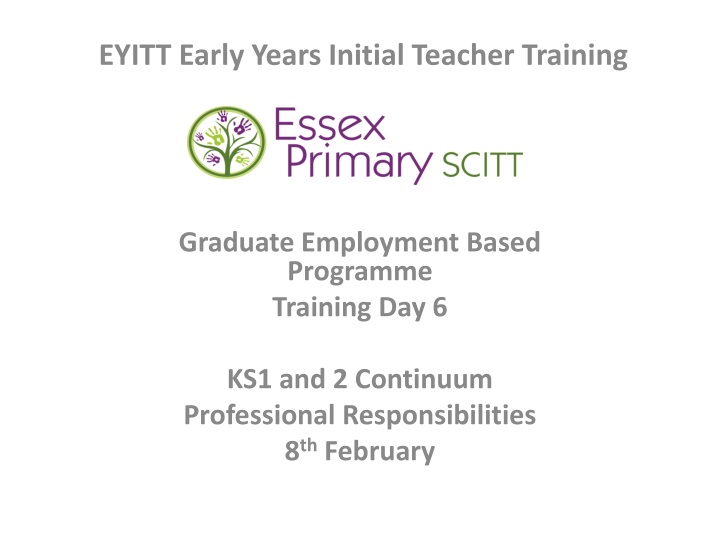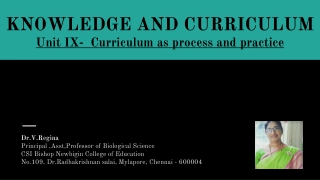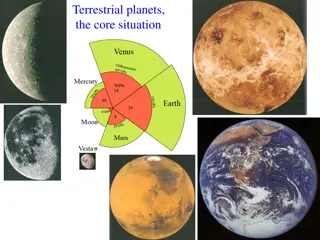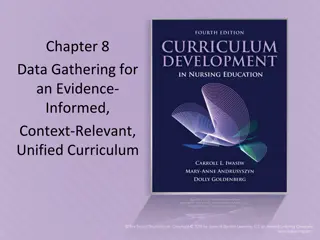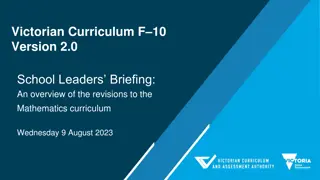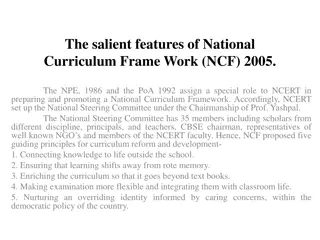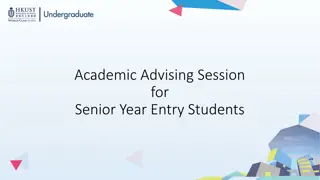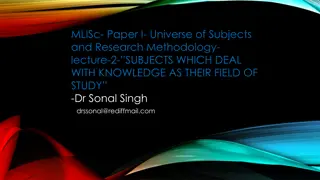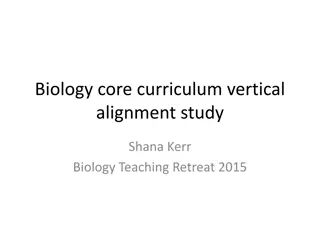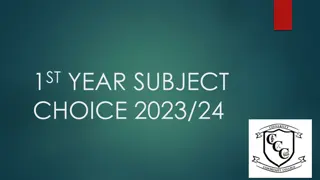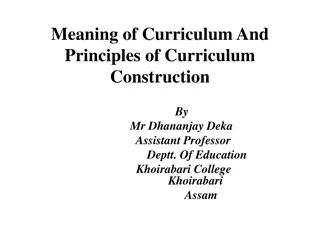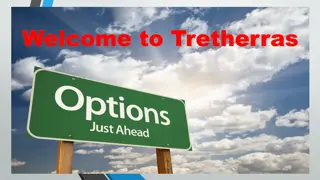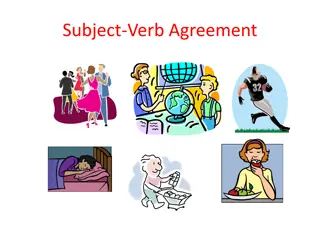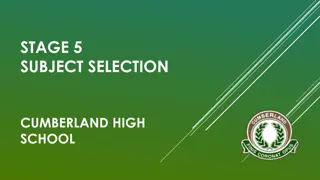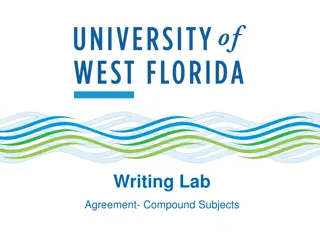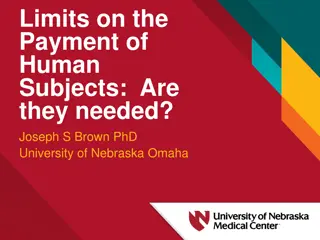National Curriculum: Core Subjects and Essential Knowledge
The national curriculum in schools plays a vital role in shaping educational outcomes by offering a balanced and broad-based curriculum that promotes holistic development and prepares students for future life experiences. It covers key stages and various subjects, providing essential knowledge and fostering creativity in pupils beyond the outlined specifications.
Download Presentation

Please find below an Image/Link to download the presentation.
The content on the website is provided AS IS for your information and personal use only. It may not be sold, licensed, or shared on other websites without obtaining consent from the author.If you encounter any issues during the download, it is possible that the publisher has removed the file from their server.
You are allowed to download the files provided on this website for personal or commercial use, subject to the condition that they are used lawfully. All files are the property of their respective owners.
The content on the website is provided AS IS for your information and personal use only. It may not be sold, licensed, or shared on other websites without obtaining consent from the author.
E N D
Presentation Transcript
EYITT Early Years Initial Teacher Training Graduate Employment Based Programme Training Day 6 KS1 and 2 Continuum Professional Responsibilities 8thFebruary
Aims of this session Session 1 and 2 (a.m.) To explore the continuum from EYFS through key stages 1 and 2 To make links to KS1 placement tasks and foci To use the tracked children focus as exemplification of learning through EYFS, KS1 and KS2 Session 3 and 4 (p.m.) To review evidence for fulfilling wider professional responsibilities (Standard 8) and adapting education to meet needs (Standard 5) To discuss/develop effective practice in relation to portfolio annotation To catch up on general issues relating to tasks and course content including assignment feedback.
Memories of primary school Think Pair Share
Standard 3.3 Demonstrate a critical understanding of the EYFS areas of learning and development nd engage with the educational continuum of expectations, curricula and teaching of key stage 1 and 2
The national curriculum Every state-funded school must offer a curriculum which is balanced and broadly based and which: Promotes the spiritual, moral, cultural, mental and physical development of pupils at the school and of society, and Prepares pupils at the school for the opportunities, responsibilities and experiences of later life. 4 key stages; 12 subjects (p7)-core and foundation; Programmes of Study
Aims The national curriculum provides pupils with an introduction to the essential knowledge that they need to be educated citizens. It introduces pupils to the best that has been thought and said; and helps engender an appreciation of human creativity and achievement. The national curriculum is just one element in the education of every child. There is time and space in the school day and in each week, term and year to range beyond the national curriculum specifications. The national curriculum provides and outline of core knowledge around which teachers can develop exciting and stimulating lessons to promote the development of pupils knowledge, understanding and skills as part of the wider school curriculum.
Content of the National Curriculum EYFS areas of learning National curriculum PSED PSHE Communication and language English; Speaking and listening Physical development Physical Education Understanding of the world Science; Geography; History; Design and Technology ; Computing Expressive arts and design Art and design; Music; Drama Mathematics Mathematics: numeracy across the curriculum Literacy English: literacy across the curriculum Daily act of collective worship; Religious Education All schools should make provision for personal, social, health and economic education (PSHE), drawing on good practice. Schools are also free to include other subjects or topics of their choice in planning and designing their own programme of education. The national curriculum forms one part of the school curriculum
Effective learning and teaching Development Matters Creating and thinking critically: thinking Having their own ideas Making links Choosing ways to do things Playing and exploring: engagement Finding out and exploring Playing with what they know Being willing to have a go Active learning; motivation Being involved and concentrating Keeping on trying Enjoying achieving what they set out to do Positive relationships Unique child Enabling environment
Effective learning and teaching NC2004 How What Communication Skills Creative Thinking Empathy Enquiry Evaluation Information Processing Managing Feelings Motivation Problem Solving Reasoning Self-Awareness Social Skills Set high expectations and give every learner confidence they can succeed Establish what learners already know and build on it Structure and pace the learning experience to make it challenging and enjoyable Inspire learning through passion for the subject Make individuals active partners in their learning Develop learning skills and personal qualities
Development Matters NC 2004 Creating and thinking critically: thinking Having their own ideas Making links Choosing ways to do things Playing and exploring: engagement Finding out and exploring Playing with what they know Being willing to have a go Active learning; motivation Being involved and concentrating Keeping on trying Enjoying achieving what they set out to do Communication Skills Creative Thinking Empathy Enquiry Evaluation Information Processing Managing Feelings Motivation Problem Solving Reasoning Self-Awareness Social Skills Connections and synergies?
Structure of the National Curriculum Key Stage 1 (5-7) Key Stage 2 (7-11) English Y Y Mathematics Y Y Science Y Y Art and design Y Y Computing Y Y Design and technology Y Y Languages Y Geography Y Y History Y Y Music Y Y Physical Education Y Y Citizenship Religious Education Y Y Sex and Relationships Education
Cross cutting themes In 3 groups read the following sections and a) summarise the key messages b) relate these to practice in Early Years 4. Inclusion (p8) 5. Numeracy and mathematics (p9) 6. Language and literacy (p10)
Getting to know the NC Decide on your team name! What are the sub divisions within the PoS for English? What are the sub divisions within the PoS for mathematics? Science: in what year group would children learn the following: Identify and name a variety of common animals that are carnivores, herbivores and omnivores Describe the movement of the Earth, and other planets, relative to the Sun in the solar system Explore the part that flowers play in the life cycle of flowering plants, including pollination, seed formation and seed dispersal Compare and group materials together according to whether they are solids, liquids or gases List the statutory foundation subjects in KS1 and 2 How does the organisation of the foundation subject content differ from the core subjects? In which foundation subjects would pupils be taught the following (include subject, key stage and page reference): About great artists, architects and designers in history About significant historical events, people and places in their own locality Use the eight points of the compass, four and six figure grid references, symbols and keys How to use technology safely and respectfully, keeping personal information private Experiment with, create, select and combine sounds using the inter-related dimensions of music Then : create a question for the other teams to answer - don t be too mean!
Exploring the continuum Using the focus area of learning for your tracked children, research how it develops and progresses through key stages 1 and 2 in the NC. 1. Make brief notes using the NC document 2. Plan how you could develop this further in your KS1 placement (e.g. what questions will you ask; what documents could you look at; what could you observe). How could you record this for your portfolio? 3.3 Demonstrate a critical understanding of the EYFS areas of learning and development and engage with the educational continuum of expectations, curricula and teaching of key stages 1 and 2.
Supporting transition (5.4) KS1 training plan amendment Arrange a meeting with those responsible for transition into the school, into KS1 and into KS2. Discuss how children are supported at each of these transitions. This will include how they use the Early Learning Goals and how they address the needs of those not yet meeting the ELGs on transition to KS1 and How the EYFS setting can/could support the transition into school (as a partnership). (ELG assessment will be covered in more detail in May)
Organising the curriculum in KS1 and 2 Models: The national curriculum in the local context Thematic planning including core subjects Thematic planning for the foundation subjects only Subject based planning (with or without links) Specialist subject teaching Key skills led Research some school websites to see how they organise and present their curriculum. Include your KS1 placement school. All schools must publish their school curriculum by subject and academic year online
The planning process Long term curriculum map allocates content to terms/half terms Medium term plan define key knowledge and concepts to be taught, with progression and possible key activity outline Timetables (whole school/class) Short term plan week or day plans with details of objectives, activities, differentiation methods of assessment: usually annotated with outcomes and implications for future teaching.
Teaching and learning Grouping Ability Mixed ability Guided groups Friendship Supported/independent Whole class Self-selected level of challenge Pairs/learning partners/triads You have been asked to reflect on grouping as part of your KS1 placement observations. Some or all of the above may be observed.
The role of the teacher Compare the Teachers Standards with the Teachers Standards (Early Years). Identify and reflect on the key similarities and differences.
Preparing for the KS1 placement Training programme overview KS1 Handbook: familiarisation Questions?
Wider professional responsibilities Making reference to the sub-standards and amplification of Standard 8, identify an area of challenge 10 minute teams (of 3) The owner uses 2 minutes to explain the situation to the group The group has 5 minutes to explore solutions The team uses 2 minutes to feedback suggestions In the final minute the owner summarises the action they might now take. Repeat for each group member
Review session Meeting specific needs: evidencing standards 5.1, 5.3, 5.5 Contributing to multi-agency team working: Standard 8.7 What if I have no key children with specific identified learning needs? Interview a key lead in the setting e.g. SENCO and make a transcript summary of your learning and the implications for practice Shadow a colleague Research and develop a case study of a child/group of children in the setting Undertake personal research and present the key findings to practitioner colleagues Do not overlook low level need that can still be a significant barrier to progress and well-being (may also link to attachment 2.3) or the needs of the more able Include home circumstances such as parent separation, bereavement, being part of a forces family, parent /sibling ill health which can have a major impact and may require strategies to support.
Individual progress Using your individual progress tracker & the standards tracker, identify gaps and plan for how your WBM can support you during your dedicated mentor meetings What else do you need in order to meet the standards?
7.3 Safeguarding 7.3 Know and understand child protection policies and procedures, recognise when a child is in danger or at risk of abuse, and know how to act to protect them. Amplification: Apply policies, procedures and protocols in order to keep children safe. They recognise the signs and symptoms of actual or potential harm and recognise when children are in danger. They know how and when to act to safeguard them, including liaising with and referring matters to professionals working in children s social care. Early Years Professionals understand their responsibility to act proactively to safeguard children.
